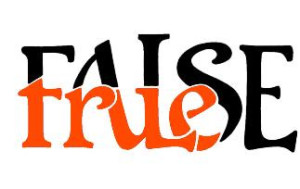Jun
12
Part 1: Firm Foundation
“I yam what I yam, and that’s all what I yam.” — Popeye, the sailorman
Given the subjects that I usually read and write about on this blog, critical thinking really comes in handy. Not that I’m some great logician or anything. Far from it! But, over the last few years, I’ve been exposed to the discipline of informal logic by some pretty darn good thinkers. (At least, I think they are.) I’ve noticed that I am now more apt to notice logical errors & fallacies when reading or listening to someone’s arguments for his/her position on a particular topic. It’s not always easy, and sometimes I get lazy about it, but it is helping my thinking process. And, yes, this applies to matters of science, politics, and religion (including theology, philosophy/worldview, & apologetics), as well as day-to-day issues.
 I recently came across a great primer on informal logic and critical thinking in the book A World of Difference: Putting Christian Truth-Claims to the Worldview Test by Kenneth R. Samples, who teaches on the subject. It was a great summary, and I thought it so valuable that I decided to adapt Samples’ presentation into a series of blogposts.
I recently came across a great primer on informal logic and critical thinking in the book A World of Difference: Putting Christian Truth-Claims to the Worldview Test by Kenneth R. Samples, who teaches on the subject. It was a great summary, and I thought it so valuable that I decided to adapt Samples’ presentation into a series of blogposts.
Now, some of you are thinking that this sounds like it’ll be dull, or hard, or both. But, it’s not really all that difficult, and I think it’s actually kinda fun! When the pieces come together in your mind and you’re able not just to recognize bad thinking but also see why it’s bad, it’s really cool! Not only will you become a better thinker, but as a result you’ll be able to formulate better arguments and, therefore, be a better case-maker & debater on the subjects you hold dear.
Sound good?
Before we begin, though, I think I need to address a couple misconceptions that some people have about logic. For one, there is no such thing as “man’s logic” vs. “God’s logic”. There is only accurate (i.e., valid & sound) vs. inaccurate attempts at logical, rational thinking. We humans are finite, our knowledge is finite, and our natures are morally fallen. So, issues like pride, selfishness, etc., as well as physical & psychological limitations, can get in the way of our objectivity and clear thinking. But, technically, logic is logic. It proceeds, if you will, from the rational mind & nature of God Himself, but it is recognizable and accessible (even if not always consciously) by His higher-order creatures.
Secondly, there is no such distinction as “Western logic” vs. “Eastern logic”. Western and Eastern civilizations may, generally speaking, have different ways of viewing world-and-life issues, different emphases in how they approach problems, etc. But logic is the same, regardless. As soon as someone tries to persuade you that the East does not use “Western logic” (and, therefore, you can’t hold them accountable for seemingly irrational statements), point out to them that they are using the same logic you do when they try to explain & persuade. (They just use it poorly.) They also use that logic in their day-to-day lives.
OK. The first thing we need to do is set a firm foundation. That is, we need to identify the three foundational laws of logic on which everything else is built. They apply to EVERYthing, regardless of your worldview. Whether you are assessing if a thing exists or if a thing is true, it’s all grounded on (in?) these basic — I would say, self-evident — principles:
1) The Law of Noncontradiction: “A” cannot equal “A” and equal “non-A”
2) The Law of Excluded Middle: “A” is either “A” or “non-A”
3) The Law of Identity: “A” is “A”
Let’s start with the Law of Noncontradiction. By definition, two contradictory statements negate or deny each other. They cannot both be true and cannot both be false. If one is true, the other must be false. For example, take these two statements:
“I am human.”
“I am not human.”
I am sure you can see that they cannot both be true. I cannot both be and not be human. How about an example from one of my favorite topics?
“God created the universe.”
“God did not create the universe.”
One or the other is true, but not both. Right? But, it can get a little trickier. Before I explain, let me give you a couple ways that the Law of Noncontradiction is typically stated:
“A thing cannot both be and not be at the same time and in the same way.”
Or,…
“A statement cannot be both true and false at the same time and in the same way.”
Notice that italicized, conditional phrase at the end there? That’s critical. Try these two statements:
“I am married.”
“I am not married.”
It is very possible for both to be true over the course of my life, but not at the same time and not in the same way. Here’s another example:
“Jesus of Nazareth is alive.”
“Jesus of Nazareth is dead.”
 Unless you doubt that Jesus of Nazareth ever lived, then you must agree that both statements were true but not at the same time and in the same way. Christians will differ with non-Christians as to whether or not Jesus is still dead, but we all agree that he was alive on Earth for a number of years and then was killed. Dead… the opposite of alive. (Alternatively, some argue that Jesus was not killed on the cross but somehow escaped; but, he eventually died. Still dead.)
Unless you doubt that Jesus of Nazareth ever lived, then you must agree that both statements were true but not at the same time and in the same way. Christians will differ with non-Christians as to whether or not Jesus is still dead, but we all agree that he was alive on Earth for a number of years and then was killed. Dead… the opposite of alive. (Alternatively, some argue that Jesus was not killed on the cross but somehow escaped; but, he eventually died. Still dead.)
The Law of Excluded Middle is closely related to the Law of Noncontradiction, but it focuses on the either/or aspect. This law can be stated as:
“Something either is or it is not.”
Or,…
“A statement is either true or false.”
No middle ground. Either one or the other must be true.
“The U.S. has accumulated more debt under Obama than under all previous administrations combined.”
“The U.S. has not accumulated more debt under Obama than under all previous administrations combined.”
You cannot respond by saying, “Well, they’re both sort of true.” Assuming everyone agrees to the numbers being added and the relevant adjustments for inflation, simple math tells us that either the first statement is true and the second is false or the first is false and the second is true.
The Law of Identity is perhaps even more straightforward. (In fact, it seems to me that this one should be presented first, but apparently logicians consider the Law of Noncontradiction as the first among equals.) It is usually phrased something like this:
“A thing (e.g., person, event, judgment) is what it is.”
Or,…
“A true statement is true.”
The basic idea is that something is a) identical to itself and b) different from everything else. (Well, duh!) I referred to Jesus of Nazareth earlier. He was/is who He was/is and nobody else. (Also, see opening quote by the great existentialist philosopher, Popeye.)
Make sense? That wasn’t so bad, was it? (Hush, you in the back!)
Thus endeth the first lesson….















